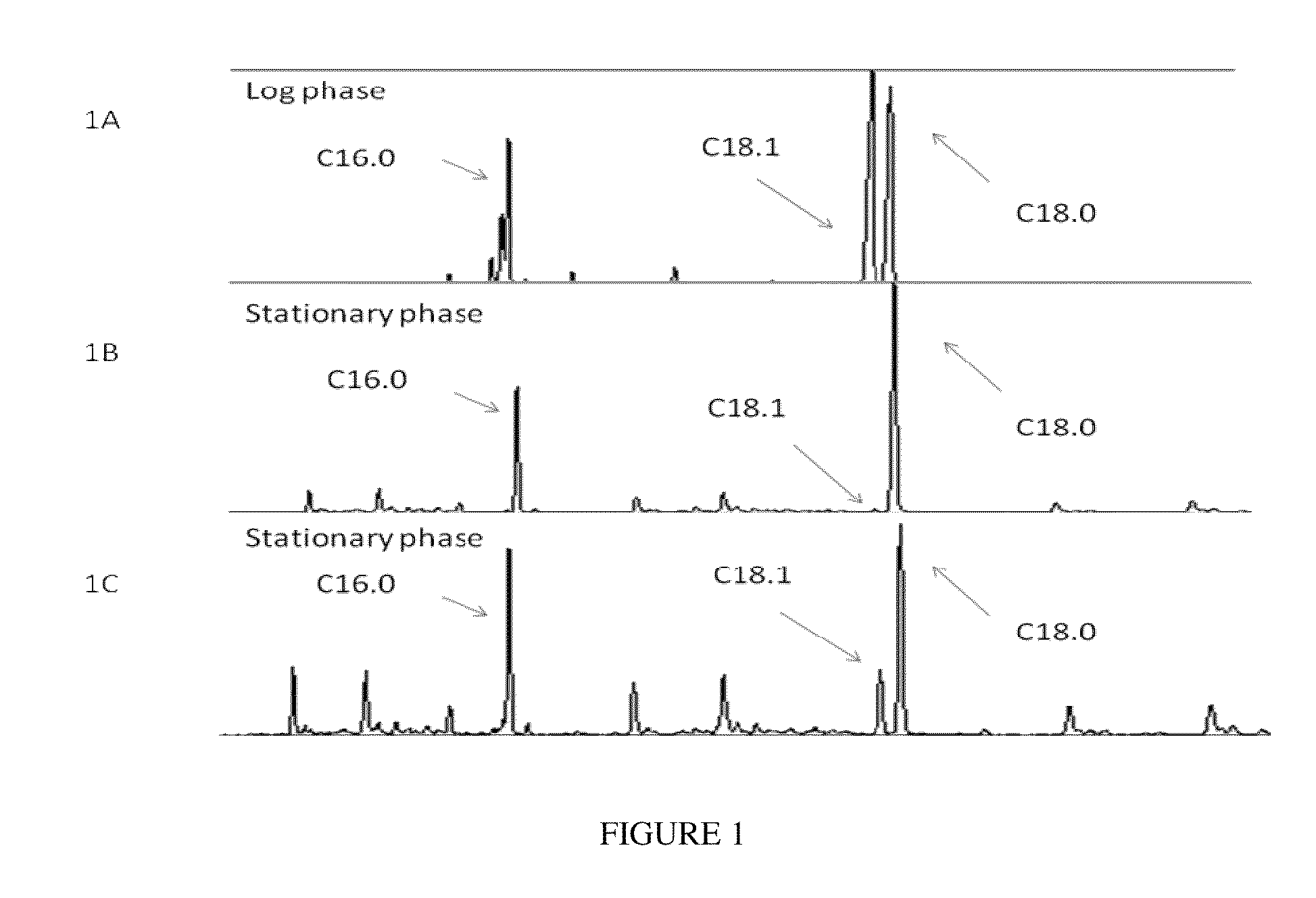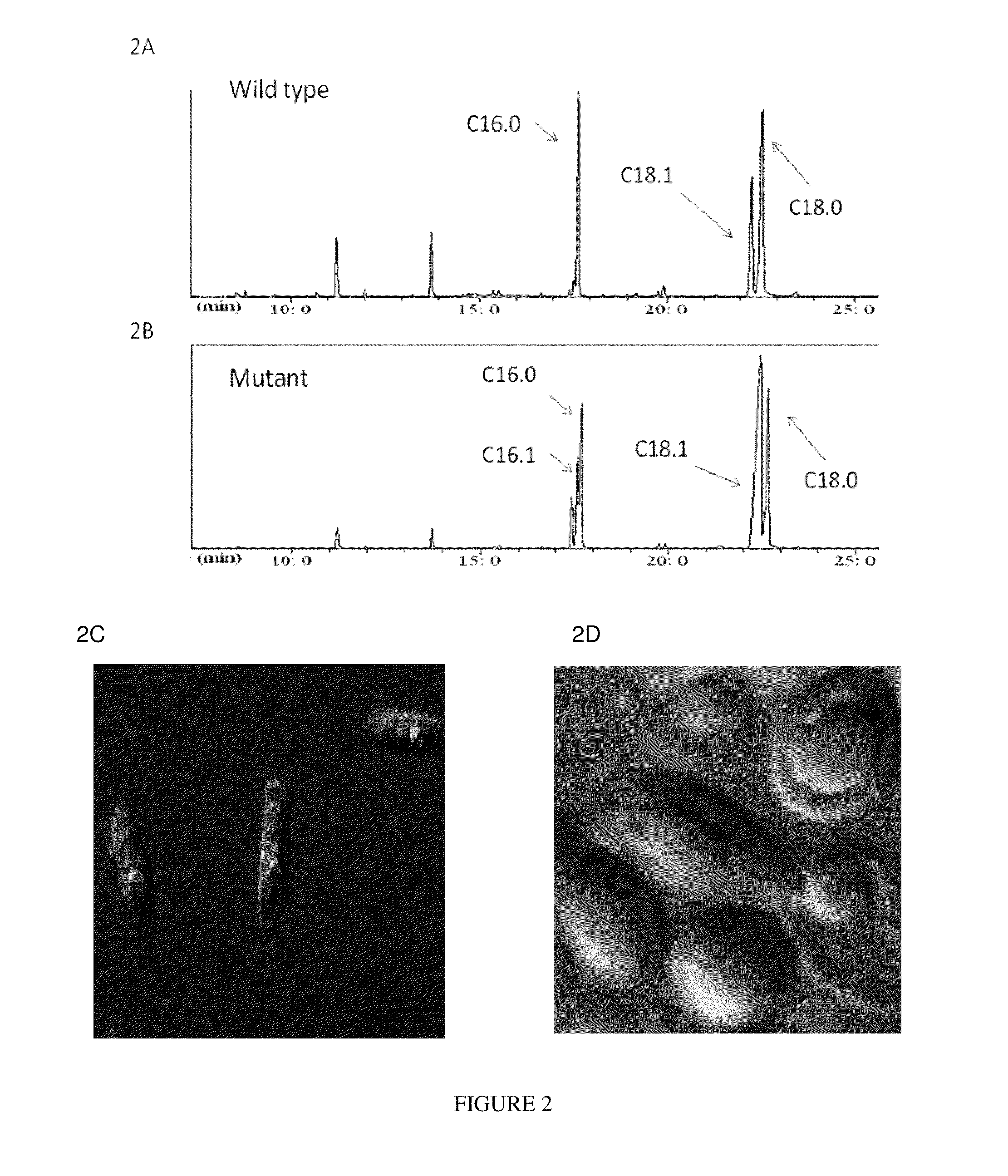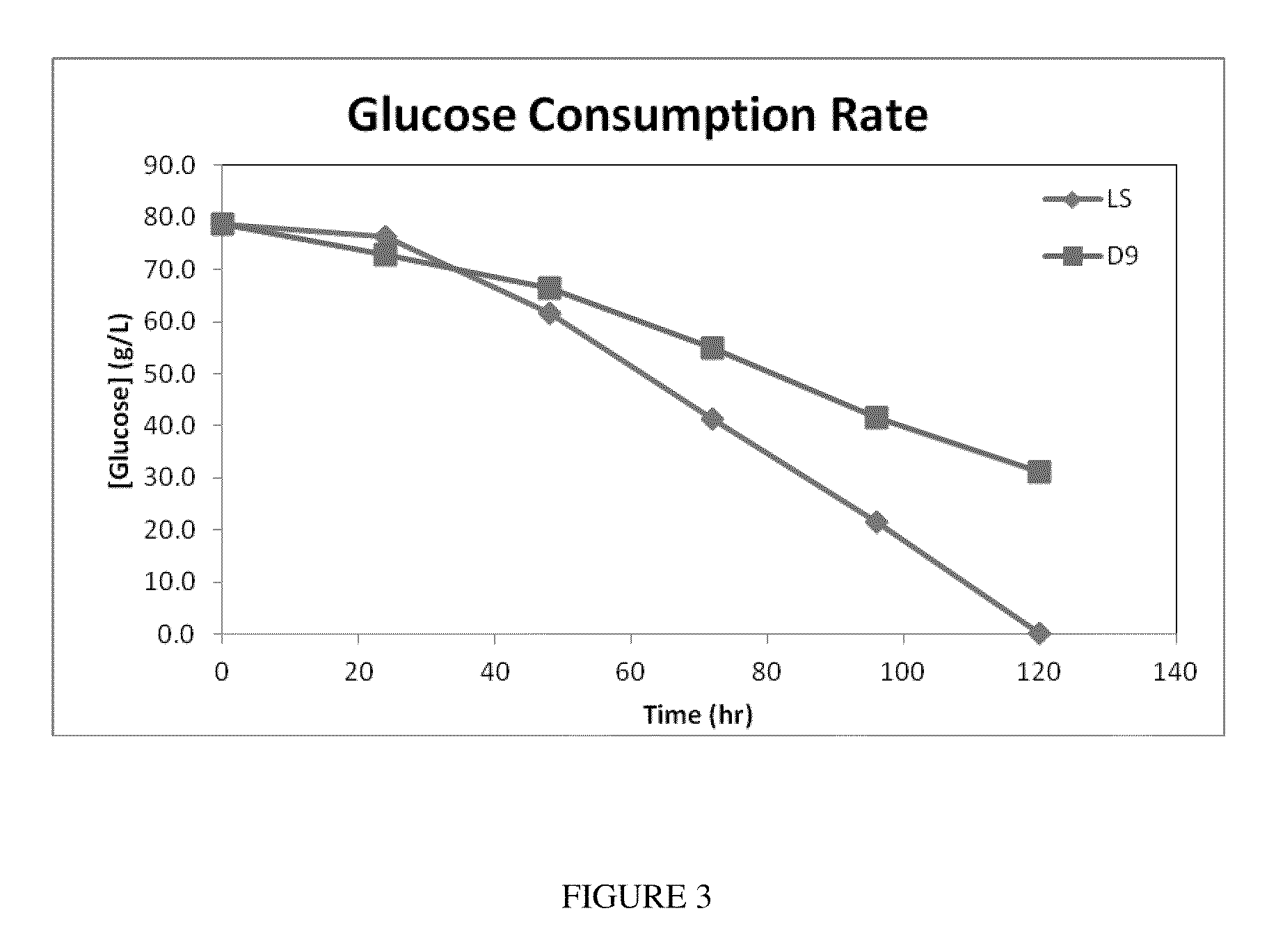Microbial engineering for the production of fatty acids and fatty acid derivatives
a technology of fatty acids and derivatives, applied in the field of microbial engineering for the production of fatty acids and fatty acid derivatives, can solve the problems of microorganisms commonly employed in biofuel or biofuel precursor production that do not conform to the required phenotype in a way sufficient to allow, engineering of microorganisms, and lack of genomic information and annotation of key metabolic pathway regulators in target microorganisms. achieve high biomass formation rate, high biofuel productivity, and high level of intracellular accumulation
- Summary
- Abstract
- Description
- Claims
- Application Information
AI Technical Summary
Benefits of technology
Problems solved by technology
Method used
Image
Examples
example 1
[0158]A qualitative profile of total free fatty acid (FFA) pool was probed in Y. lipolytica culture grown in the log and stationary growth phases using GC-MS (FIG. 1A-C). The major FFA pool is comprised of saturated palmitic and stearic acids and unsaturated oleic acid. A comparison of the FFA profiles in the two growth phases revealed absence of oleic acid in the stationary phase while similar peak intensities of stearic and oleic acid were observed in the log phase (FIG. 1A, B). Analysis of the total lipids (FFA+lipids) during stationary phase recovered partial amount of the oleic acid suggesting that oleic acid is being routed for TAG formation (FIG. 1C). The remaining pool of oleic acid is utilized for downstream poly-unsaturated fatty acids and therefore cannot be rescued. Therefore, oleic acid is channeled to TAG formation in a temporal fashion during stationary growth phase that coincides with the timing of activation of intracellular TAG storage pathway. This suggests a chec...
example 2
[0159]Since in mouse SCD is essential for lipogenesis (see, e.g. Regulation of stearoyl-CoA desaturases and role in metabolism. Prog Lipid Res. 2004 March; 43(2):91-104) and is reported to be important for the synthesis of unsaturated fatty acids in most organisms, we tested the role of Y. lipolytica SCD as a rate limiting step in TAG accumulation. Protein sequence analysis of Saccharomyces cerevisiae OLE1 gene encoding SCD against Y. lipolytica protein sequences revealed a protein with 51% identity. The Y. lipolytica desaturase contains three histidine boxes and a cytochrome b5 domain typical to other stearoyl-CoA desaturases. Since desaturase enzymes are highly regulated at gene transcription level (see e.g., Regulation of stearoyl-CoA desaturase by polyunsaturated fatty acids and cholesterol. James M. Ntambi. Journal of Lipid Research, Vol. 40, 1549-1558, September 1999) and during the log and stationary phase of cell growth (see Mol Cell Biol Res Commun. 1999 April; 1(1):36-43),...
example 3
[0162]Two types of mutant yeast were generated, which overexpressed the following genes: Mutant 1: SCD, Hemoglobin, Glut1, Cytochrome; Mutant 2: Hemoglobin, Glut1, Cytochrome. The respective genes were cloned into plasmid YLEX between PmlI and Kpn sites. The vector was transformed in Po 1 g Yarrowia lipolytica strain and selected on Leucine-deficient agar plates. The colonies were screened for the correct insert in the genome using PCR. The resulting colony was grown in YPD media and YNB media with a carbon to nitrogen (C / N) ratio of 150. This C / N ratio is necessary for triggering oil accumulation. Upon depletion of nitrogen excess sugar is channeled to oil accumulation in yeast.
[0163]In order to measure maximum oil accumulation, the cells were grown in nitrogen restricted growth media. After 72 hours the cells were harvested and dried at 60° C. for 2 days. The cells were directly treated with 1% sulphuric acid and methanol for 24 hours at 90° C. The oil was converted to FAME (fatty...
PUM
| Property | Measurement | Unit |
|---|---|---|
| Fraction | aaaaa | aaaaa |
| Concentration | aaaaa | aaaaa |
| Concentration | aaaaa | aaaaa |
Abstract
Description
Claims
Application Information
 Login to View More
Login to View More - R&D
- Intellectual Property
- Life Sciences
- Materials
- Tech Scout
- Unparalleled Data Quality
- Higher Quality Content
- 60% Fewer Hallucinations
Browse by: Latest US Patents, China's latest patents, Technical Efficacy Thesaurus, Application Domain, Technology Topic, Popular Technical Reports.
© 2025 PatSnap. All rights reserved.Legal|Privacy policy|Modern Slavery Act Transparency Statement|Sitemap|About US| Contact US: help@patsnap.com



